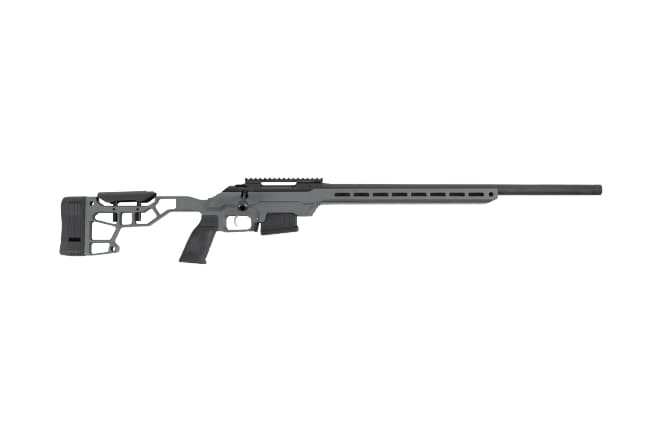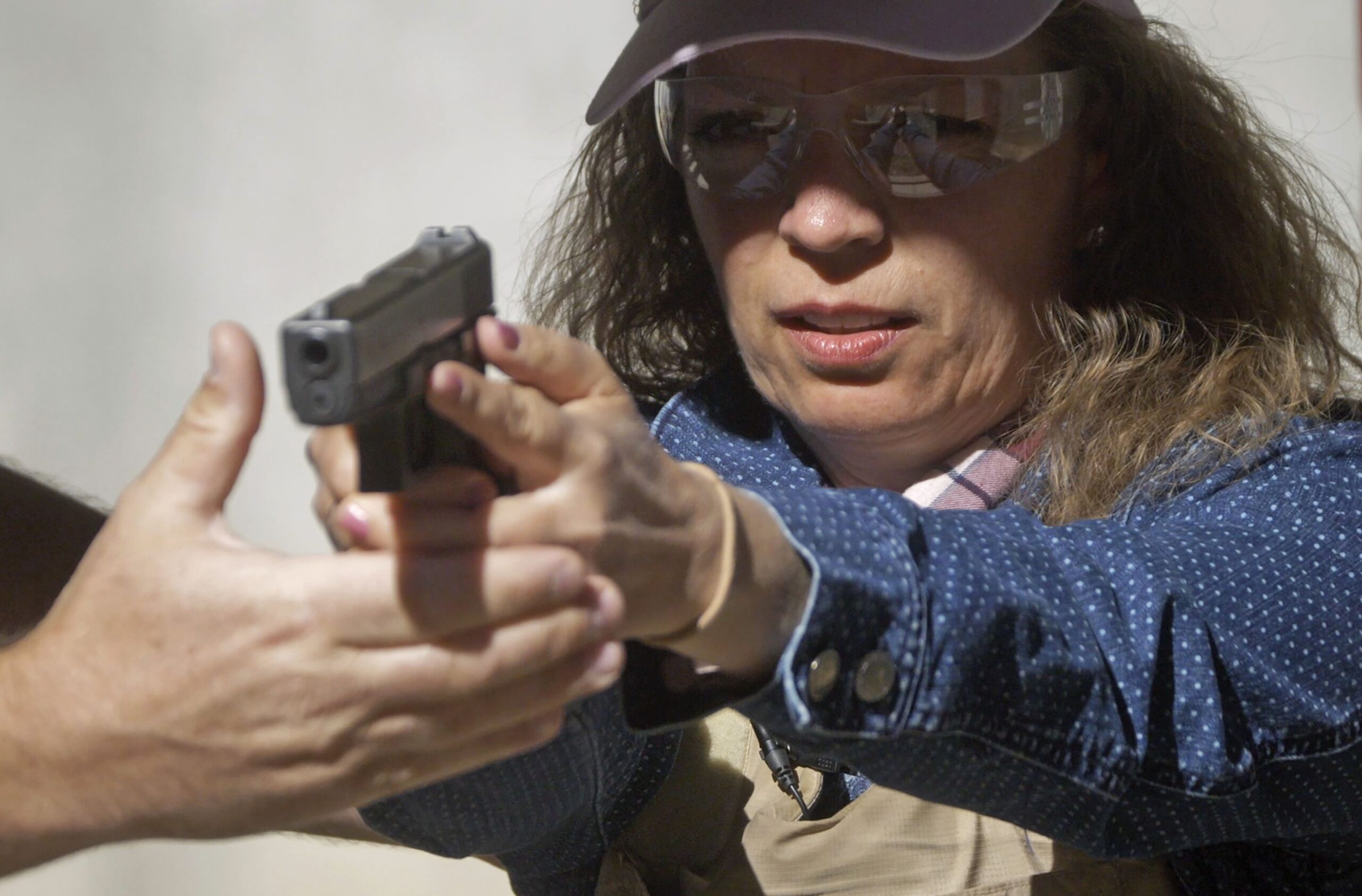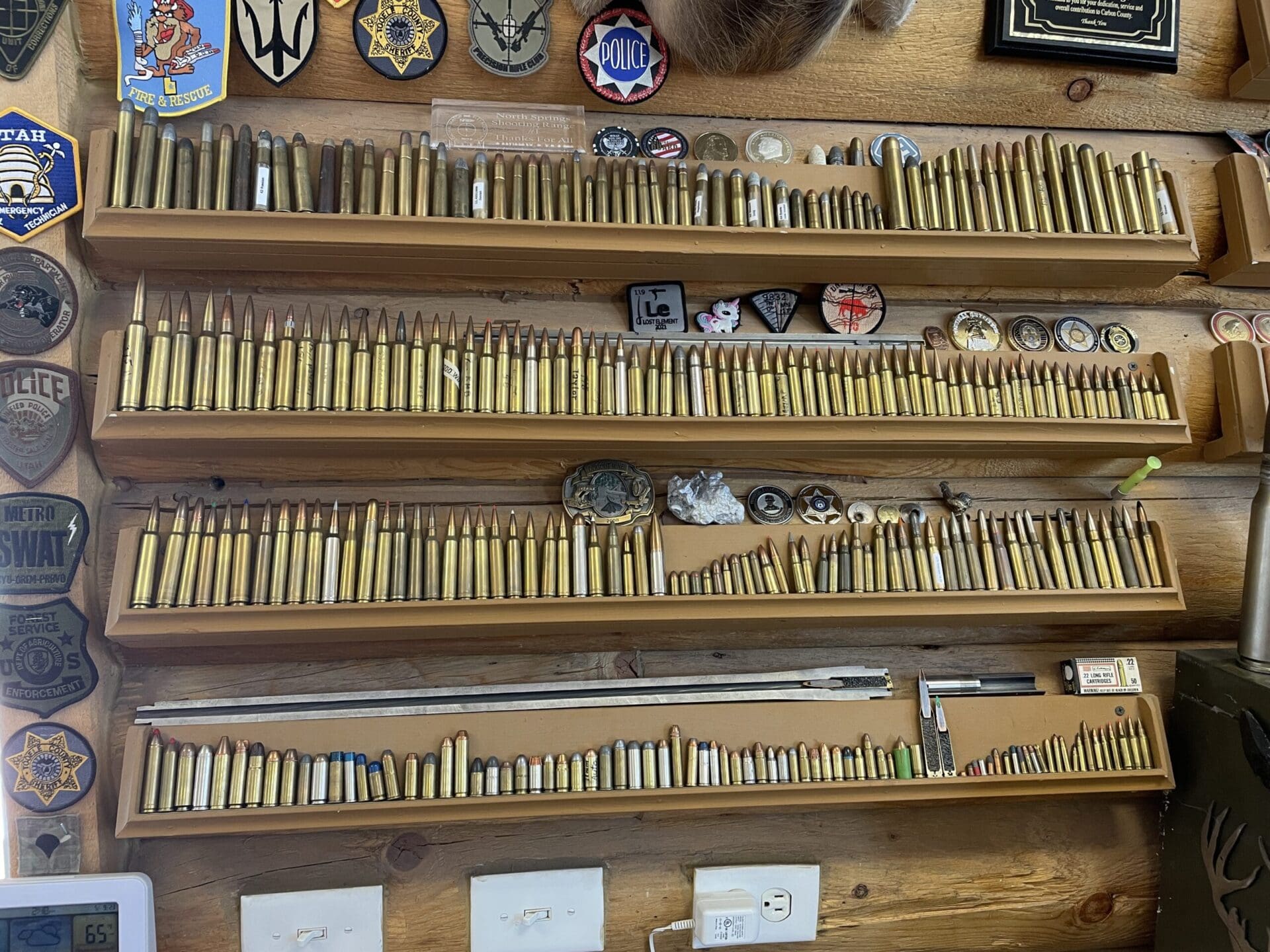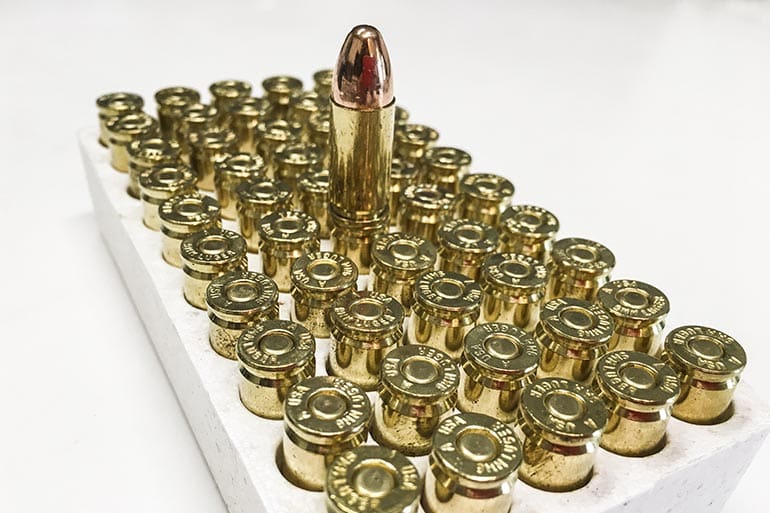
Want to improve your handgun shooting? Well, there’s no substitute for good training and a metric crap-ton of trigger time, both live and dry fire. Skill at anything just comes down to getting in the reps.
But there are some things that can make a handgun easier to shoot well for the individual who’s shooting it. Key characteristics and so on that make the job of putting in the reps easier on the shooter.
1) Caliber
Let’s start with an appropriate caliber for the individual shooter. This is one of the few aspects where caliber actually matters, but how much? Well, it depends a lot on the person.

For the newbie, 9x19mm or .38 Special (which is NOT fired from a snubbie!) are about the upper end of what a complete novitiate is going to be able to tolerate in terms of recoil.
New shooters are arguably best off with something chambered in .22LR to learn the fundamentals and put bullets on the target before graduating to higher calibers, but 9mm Luger in a compact to full-size pistol shouldn’t be too intimidating in most cases. Likewise shooting .38 Special from a revolver about the size and weight of a Model 10 is manageable for most adults.
2) The Right Fit
Another aspect is good fit. Handgun fitment comes down to two key aspects, namely that of trigger reach and the shape of the grip relative to the size of the hand that will grasp it.
Trigger reach — the linear distance straight back from the trigger face to the back of the grip — is equivalent to length of pull on a shotgun or rifle in terms of fitting the gun to the shooter. Too long or too short, and shooting it well is not as easy or as accurate as with a properly-fitting gun.

This also applies to frame size. An H&K Mark 23 is not going to be a good fit for someone with small hands. Anyone having fitment issues with their Mark 23 should also send it to me immediately so I can make sure that’s the problem. I promise I’ll return it…eventually.
The same idea applies to, say, a S&W Model 29 or a Desert Eagle. Part of the reason the compact size GLOCK 19 is so darn popular is they fit just about everyone.
As to shape, the pistol should fit naturally and comfortably in the hand. You shouldn’t feel gaps between the gun and the meat of the thumb and palm, and you should be able to naturally acquire a high, tight grip on the pistol. The shooter should feel as if the pistol is comfortable and points naturally. This is an indication of good fit.

There’s an old saw about picking up a gun and closing your eyes. If it feels like a natural extension of the arm, or if you can pick a target to aim at (without flagging anyone) and the sights align naturally on said target…you have a good gun for you. There’s something to that.
3) The Right Operating System
Next is an operating system that’s well-suited to the shooter and their skill level. We mentioned the Beretta 92/M9 platform. The DA/SA control system of the 92FS takes some time and practice to get used to. Single action 1911 pistols are also not as easily learned by the newbie as, say, a striker-fired GLOCK or, for that matter, a double-action revolver.

This isn’t to say, of course, that double-action revolvers are So Easy A Caveman Can Do It ™ or that 1911 or 92FS pistols are for experts only. The former has a lot of subtleties that can be missed. The latter two are less complicated than one might think if approached with intelligence and good training. Not only that, but people screw up with polymer striker guns A LOT…many of them people who knew better (or should have).
To put that a bit better, a person should pick a pistol that they can quickly learn to operate and handle safely, one they are comfortable with. If that’s a 1911, awesome. If it’s a Ruger LCP, that’s fine too.
If it’s a High Point…we’ll let the comments section debate that.
4) Good Sights
Just about any basic set of sights can be used by most shooters. There are dozens of options out there. Most important, though, is how easily the shooter can see them along with the target.

In general, if they stand out to you, then you have probably have good sights. If you have to strain to see them, you don’t have the right sights for you.
Another old saw: you need sights you can see and a trigger that works…which leads us into the next thing:
5) A Good Trigger

Just about anyone can learn how to competently operate a GLOCK or similar trigger fairly quickly. Take up the slop, finish the press, and bang…pretty easy. But that doesn’t mean a pistol’s stock trigger can’t be improved by a competent gunsmith to make it more than just OK.
Even with a good trigger, double-action/single-action semi-autos take a good amount of practice to get truly proficient, by which one means not pulling that first DA shot.
Granted, this is only a general rule; some people can pick up a Beretta or a CZ or what have you and not have an issue. But as a general rule, a good trigger and a system that is appropriate for you and your skill level is going to make good shooting a lot easier. That’s part of why 1911 pistols have stayed so popular; their straight-travel trigger (the trigger bar travels straight back, whereas most triggers are a lever) is very forgiving in that regard.
6) Sight Radius

There’s a reason why snubbie revolvers are referred to as a master’s weapon. Their short barrel and sight radius make them harder to shoot as accurately as a gun with a longer barrel like, say, a Model 10 or a Ruger Mark IV. The longer the distance between the front and rear sight, the easier it is to be accurate.
Granted, plenty of pistols with relatively short barrel lengths — the M&P Shield, a GLOCK 43 or a SIG P365, for instance — are plenty accurate at their intended distances. They don’t take a heck of a lot of work to get reasonably accurate with them. But as a general rule, the shorter the barrel, the harder accuracy is to come by, especially for newbie shooters.
A shooter is naturally going to have an easier time hitting the target while shooting a pistol that has a longer sight radius. This is also why a good number of police departments are switching to GLOCK 34s and 35s in lieu of the GLOCK 17 and GLOCK 22. That’s why the M&P Shield is now offered with a longer barrel, too.
Does this mean you can’t shoot a 3-inch barrel gun well? No, but it’s easier to shoot a gun with a 4-inch barrel well than one with a 3-inch barrel. So considering a model with a longer barrel and living with it can pay dividends in terms of accuracy.
Anything else that you think makes a pistol easier to shoot well for most shooters? Sound off in the comments.








